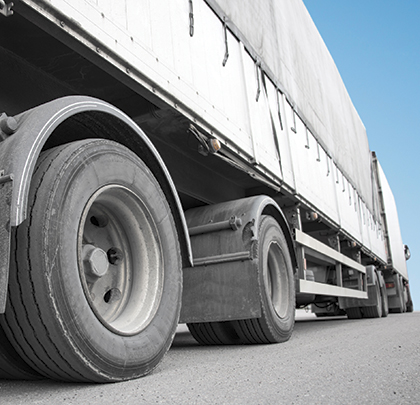If you’re feeling a little overwhelmed and perplexed by what is being referred to as the “ELD Mandate”, you’re certainly not alone. There has been a significant amount of confusion surrounding the Federal Motor Carrier Safety Administration’s (FMCSA) electronic logging device rule, especially since the agency pushed the publication of the final rule to November 9, 2015, but has now brought it back to its original publication date of September 30, 2015.
A QUICK REVIEW
If you recall, back on March 13, 2014, FMCSA announced a proposal to require interstate commercial truck and bus companies to use Electronic Logging Devices (ELDs) in their vehicles to improve compliance with the safety rules that govern the number of hours a driver can work. FMCSA believes that the rule will “significantly reduce the paperwork burden associated with hours-of-service recordkeeping for interstate truck and bus drivers—the largest in the federal government following tax-related filings—and improve the quality of logbook data.”
According to FMCSA, the final ELD rule will establish minimum performance and design standards for hours-of-service (HOS) electronic logging devices (ELDs), requirements for the mandatory use of these devices by drivers currently required to prepare HOS records of duty status (RODS), requirements concerning HOS supporting documents, and measures to address concerns about harassment resulting from the mandatory use of ELDs.
As you can see from the preceding list, the ELD Mandate deals with a number of different issues, but the primary concern is that the mandate requires that drivers who use paper logbooks to record their compliance with Hours of Service requirements switch to an electronic logging device (ELD) to record a driver’s Record of Duty status.
Once the rule is enacted, fleets will have 2 years to implement certified ELDs to record HOS. However, fleets already equipped with electronic logging technology (such as Automatic On-Board Recording Devices [AOBRDs] or Electronic On-Board Recording Devices [EOBRs]) will have until late 2019 to ensure compliance with the published specifications.
WHAT ABOUT CRANES?
Since at the time of this writing the rule has yet to come out, it’s difficult to know exactly what it will say, but leading industry experts familiar with the issue state that any driver of a commercial motor vehicle (CMV) will be subject to the ELD Mandate if they are currently required to keep a Record of Duty status for interstate commerce that fits the description of a commercial motor vehicle. This more than likely includes cranes.
Are their exemptions? Yes, but the full understanding of these exemptions isn’t clear just yet. Drivers who are currently using HOS exemptions, like CDL short-haul drivers operating within a 100 air-mile radius or non-CDL drivers operating within a 150-mile radius, won’t be required to install an ELD. But if the requirements to meet the short-haul exemption are broken, you will be required to keep Records of Duty Status for those days, as well as the days days you use the 16 Hour Short Haul Exemption.
In order to meet the ELD exemption you must work within a 100-mile air radius, return to the work reporting location and be released from duty within 12 consecutive hours, and follow each 12 hours of duty time with 10 consecutive hours off duty.
For crane companies, the challenge for meeting the short-haul exemption leads to another, bigger question that we can’t posit an answer to just yet.
As we see it, the problem with meeting the exemption comes when drivers exceed their 12 hours of duty time and then need to revert back to keeping Record of Duty Status for those days where the exemption could not be claimed. In these circumstances, will companies have an exemption to use paper logs or will they then need to meet the ELD mandate? Furthermore, how is the FMCSA’s definition of “on duty” going to change? Or will it remain the same. Currently “on duty” time includes all the time a crane is working, or required to be ready for work, for any employer. This has already caused some serious headaches in the industry. Unfortunately, we’ll need to wait and see once the rule is published.
WHAT DOES IT MEAN FOR YOU?
To put it simply: It’s time to start looking into which ELDs you want to install for your fleet. Here are four benefits of ELDs:
ELDs are paperless. This helps reduce the driver’s administrative workload by eliminating the need to complete paper logs.
Real-time duty status helps reduce violations. Dispatchers and drivers can monitor drivers’ hours-of-service in real time, thereby avoiding situations where drivers may be forced to drive when they are out of hours. More than 500,000 citations were issued for violations of “hours-of-service rules” last year.
Increased fuel efficiency. Some carriers will experience improved miles per gallon, and/or reduced idle time.
Increased productivity. Better time management can result in reduced administration costs. Furthermore, drivers can actually find more time in the day through better documentation. Carriers may also experience improved fleet utilization. ■
For More Information: NBIS provides the industry with Insurance & Risk Management Solutions as the Exclusively Endorsed Property & Casualty Provider for the SC&RA. Providing comprehensive coverage and Risk Management Services that works for you to prevent losses and give your company the best fighting chance in the event of a claim. For more information on the ELD Mandate, contact the NBIS Risk Management team at 877.860.RMSS.
_________________________________________________________________________
Modern Contractor Solutions – February 2016
Did you enjoy this article?
Subscribe to the FREE Digital Edition of Modern Contractor Solutions magazine.

ELD Mandate: The Time Has Come


